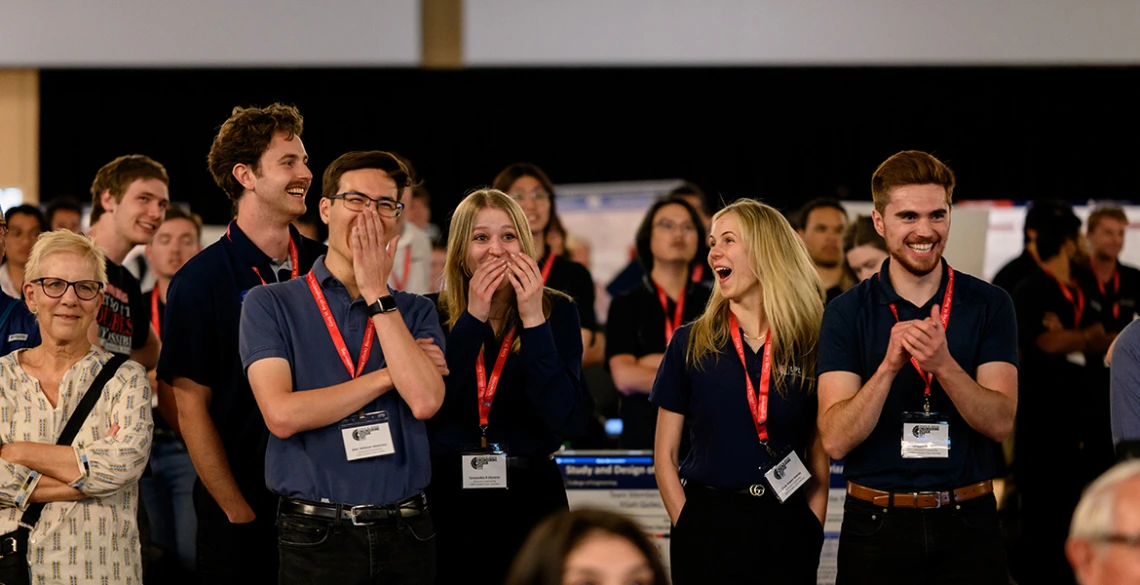New Peer Evaluation Program Builds Camaraderie and Accountability

Teams work together all year, then claim awards at Craig M. Berge Design Day.
The inner workings and success of a student team can be more complex than a final grade on an assignment. Time management, teammate interaction and sufficient training can impact the project’s outcome as well as the team’s continued interest in their field.
To identify unseen problems and facilitate strong teamwork, leaders in the University of Arizona College of Engineering Interdisciplinary Capstone program introduced the CATME Peer Evaluation assessment this semester for all mentors and students. CATME – also known as the Comprehensive Assessment of Team Member Effectiveness – allows users to confidentially rate each other’s work, keep the team on track, and benefit from behavioral team training.
“Peers are the best sources for giving feedback, since they can closely watch their team members’ behavior,” said Behzad Beigpourian, who served as a postdoctoral researcher in the college and implemented the system.
Prior to CATME, capstone teams used a more rudimentary spreadsheet system for peer assessments, which affect final grades. Beigpourian brought the new program to Larry Head, director of the Craig M. Berge Engineering Design Program. Beigpourian researches teamwork and engineering systems and wrote a 2019 paper on using CATME to improve the effectiveness of teamwork in capstone courses. Currently, more than 2 million students and nearly 10,000 instructors actively use CATME.
“Since team members consider each other as friends, it was nice to give some constructive feedback anonymously without affecting the team dynamics and friendships,” said aerospace engineering student Sophie Miller. “My favorite feature is the ability to see where your team ranked on average in each category. This makes it easy to see where I can do better and where my team can do better.”
Miller said CATME is well-suited to the engineering teams because of how many different fields the capstone projects can involve.
Systems engineering undergraduate Navin Attanayake identified a learning curve with CATME. However, as the year progressed, his team found the tool easier to use, and he appreciated the inclusion of questions about both academic performance and team dynamics, part of CATME’s “Whole Person” concept.
“By understanding how my team members view both my academic and social contributions, it helps me see where I am doing well and where I can improve,” Attanayake said. “Our team is incredibly close, and I believe that has contributed to the overall success of our project.”
One of the goals in using CATME was to discover the unseen problems in the teams, Beigpourian said.
“As a result of implementing these tools, we hope students have better communication within their teams, have better conflict management skills, respect their team members’ ideas and opinions, and improve their teamwork behavior by receiving feedback,” Beigpourian said.
According to Head, who is also a SIE professor, the peer assessments resulted in real grade and team dynamics changes; some students received negative feedback early on, and this prompted them to improve their grades in the second semester.
The teams that used CATME this semester have now completed their Interdisciplinary Capstone projects. Following positive feedback on the program from both faculty and students, Head said the college will use CATME again next semester.
“Part of being a good engineer is being a good team member,” Head said. “Our goal is to use it across the different curriculums in order to gather data and improve our education.”

